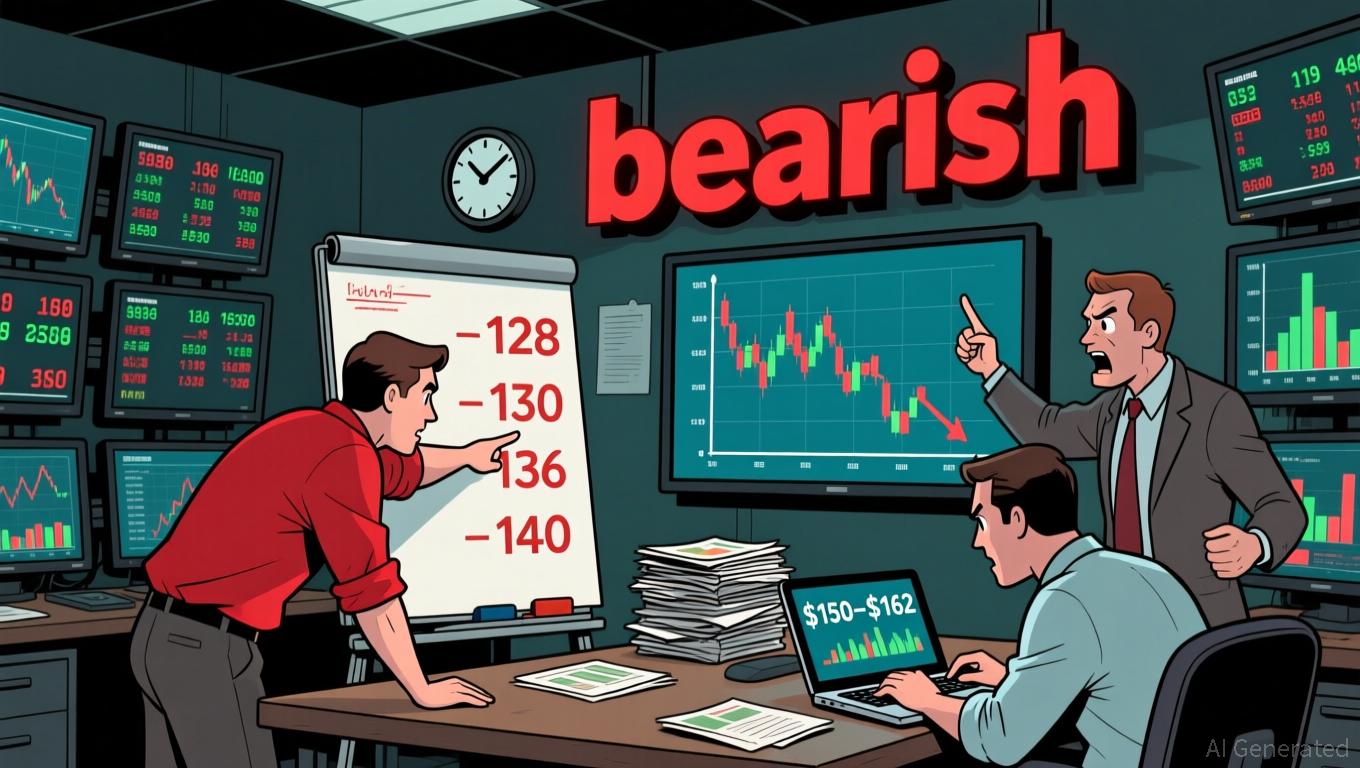Hyperliquid (HYPE) Price Rally: Institutional Embrace and Changing Market Sentiment in Decentralized Trading
- Hyperliquid's HYPE token surged due to institutional adoption and shifting market sentiment, defying broader crypto slumps. - A $1B HYPE Digital Asset Treasury merger with Rorschach I LLC and partnerships like Hyperion DeFi's HAUS protocol boosted token utility and capital inflows. - Q3 2025 analysis shows HYPE trading between $35-$60 with strong on-chain metrics, though manipulation risks and Fed policy remain critical factors. - 21Shares' HYPE ETF application and Hyperliquid's expanded $1B fundraising
Institutional Adoption: Driving Expansion
Hyperliquid’s traction among institutions has grown rapidly, thanks to collaborations with leading crypto entities. The creation of the HYPE Digital Asset Treasury (DAT) through a merger with Rorschach I LLC—a company linked to Paradigm Operations LP—has been pivotal. This $888 million transaction, which combines existing HYPE holdings and $305 million in cash, is set to establish a $1 billion DAT dedicated to acquiring and retaining HYPE tokens. Although the shareholder vote was postponed by two weeks to achieve the necessary majority,
Recent alliances have further strengthened this institutional support. In October 2025,
Market Sentiment and Technical Factors
Analysis of HYPE’s Q3 2025 market performance shows a mixed yet sturdy path. After
Despite these ups and downs, on-chain indicators remain strong.
Wider Market Landscape and Strategic Endurance
Hyperliquid’s advancement comes at a time when the broader DAT sector is experiencing a downturn, with fewer new treasury entities being announced and shrinking overall market capitalizations. Despite these headwinds, Hyperliquid Strategies has not been discouraged,
Nonetheless, macroeconomic trends remain crucial.
Summary
The surge in Hyperliquid’s price highlights the influence of institutional involvement and strategic governance within decentralized trading. Although there are ongoing challenges such as volatility and manipulation threats, the token’s strong on-chain performance, expanding collaborations, and positive technical indicators make it a noteworthy asset in the diverse crypto market. The upcoming months will be pivotal for investors to see if HYPE can move beyond its current consolidation and establish itself as a key player in institutional-grade DeFi.
Disclaimer: The content of this article solely reflects the author's opinion and does not represent the platform in any capacity. This article is not intended to serve as a reference for making investment decisions.
You may also like
Bitcoin Updates Today: Is the Crypto 'Extreme Fear' Index Signaling a Prime Buying Moment or Hinting at a Larger Downturn?
- Bitcoin falls below $90,000 for first time in seven months as crypto market loses $600B, driven by profit-taking and institutional outflows. - U.S. Senate classifies Bitcoin/Ethereum as "digital commodities," shifting regulatory authority to CFTC amid ETF outflows and hybrid fund approvals. - sFOX-Nomura joint liquidity offering aims to stabilize markets, but leveraged positions and automated liquidations worsen downward spiral. - Analysts debate long-term resilience: while institutional buying persists,

Eightco’s WLD Staking Jumps 3% as Company Moves Focus from Biometric Disputes to Blockchain Infrastructure
- Eightco's 1.3B WLD stake drove a 3% price surge as the firm shifts focus from biometric data to blockchain infrastructure projects. - The disclosure highlights institutional crypto ownership trends while distancing from WLD's controversial data monetization model. - Intuit's $100M+ OpenAI partnership boosted shares 3.4% by integrating AI financial tools into ChatGPT and enterprise platforms. - The deal underscores AI-driven fintech innovation, positioning Intuit against competitors expanding generative A

Cardano News Update: Hoskinson's Wager Against Major Holder Sell-Offs—Is ADA's $0.50 Floor at Risk?
- Cardano (ADA) stabilized above $0.50 amid whale selling and Charles Hoskinson's $200M investment in Trump-linked American Bitcoin . - Over 4 million ADA dumped weekly by large holders, signaling volatility as Hoskinson defends Bitcoin-AI synergy potential. - ADA's 41% lower trading volume and 3% open interest drop reflect reduced speculation despite technical support at $0.50. - Whale activity and stagnant $240M TVL highlight market skepticism, with Hoskinson attributing DeFi challenges to low user engag

Solana News Today: Solana Challenges $130 Support Level: Will ETF Inflows Offset Negative Market Trends?
- Solana (SOL) tests $130 support as price falls below $140, with technical indicators signaling bearish consolidation below key moving averages and resistance at $136. - Institutional adoption accelerates via VanEck's U.S. spot Solana ETF, managed by SOL Strategies through its Orangefin validator node, joining Bitwise and Grayscale in attracting $382M inflows. - Price remains range-bound near $155 amid mixed signals: ETF inflows provide partial support, but RSI/MACD remain bearish, with $162 breakout pote
